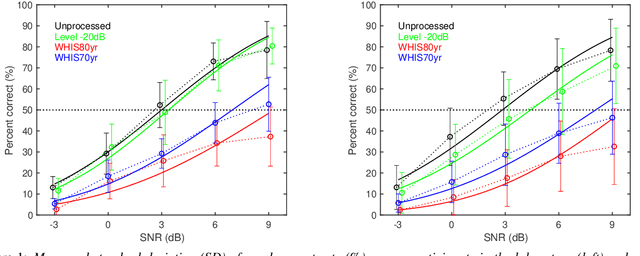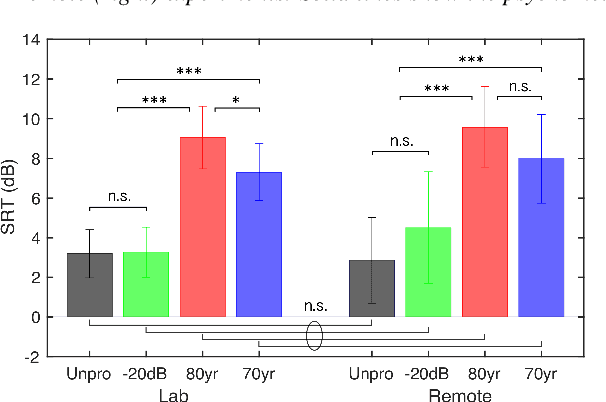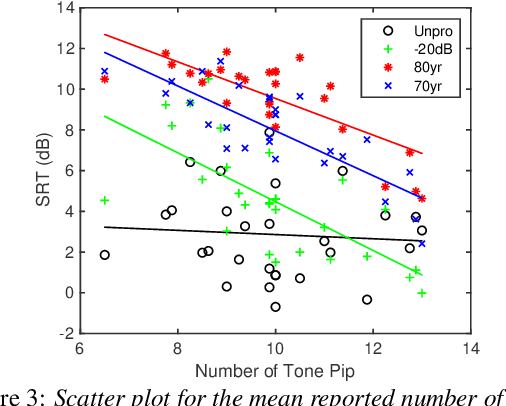Speech intelligibility of simulated hearing loss sounds and its prediction using the Gammachirp Envelope Similarity Index (GESI)
Paper and Code
Jun 14, 2022



In the present study, speech intelligibility (SI) experiments were performed using simulated hearing loss (HL) sounds in laboratory and remote environments to clarify the effects of peripheral dysfunction. Noisy speech sounds were processed to simulate the average HL of 70- and 80-year-olds using Wadai Hearing Impairment Simulator (WHIS). These sounds were presented to normal hearing (NH) listeners whose cognitive function could be assumed to be normal. The results showed that the divergence was larger in the remote experiments than in the laboratory ones. However, the remote results could be equalized to the laboratory ones, mostly through data screening using the results of tone pip tests prepared on the experimental web page. In addition, a newly proposed objective intelligibility measure (OIM) called the Gammachirp Envelope Similarity Index (GESI) explained the psychometric functions in the laboratory and remote experiments fairly well. GESI has the potential to explain the SI of HI listeners by properly setting HL parameters.
 Add to Chrome
Add to Chrome Add to Firefox
Add to Firefox Add to Edge
Add to Edge